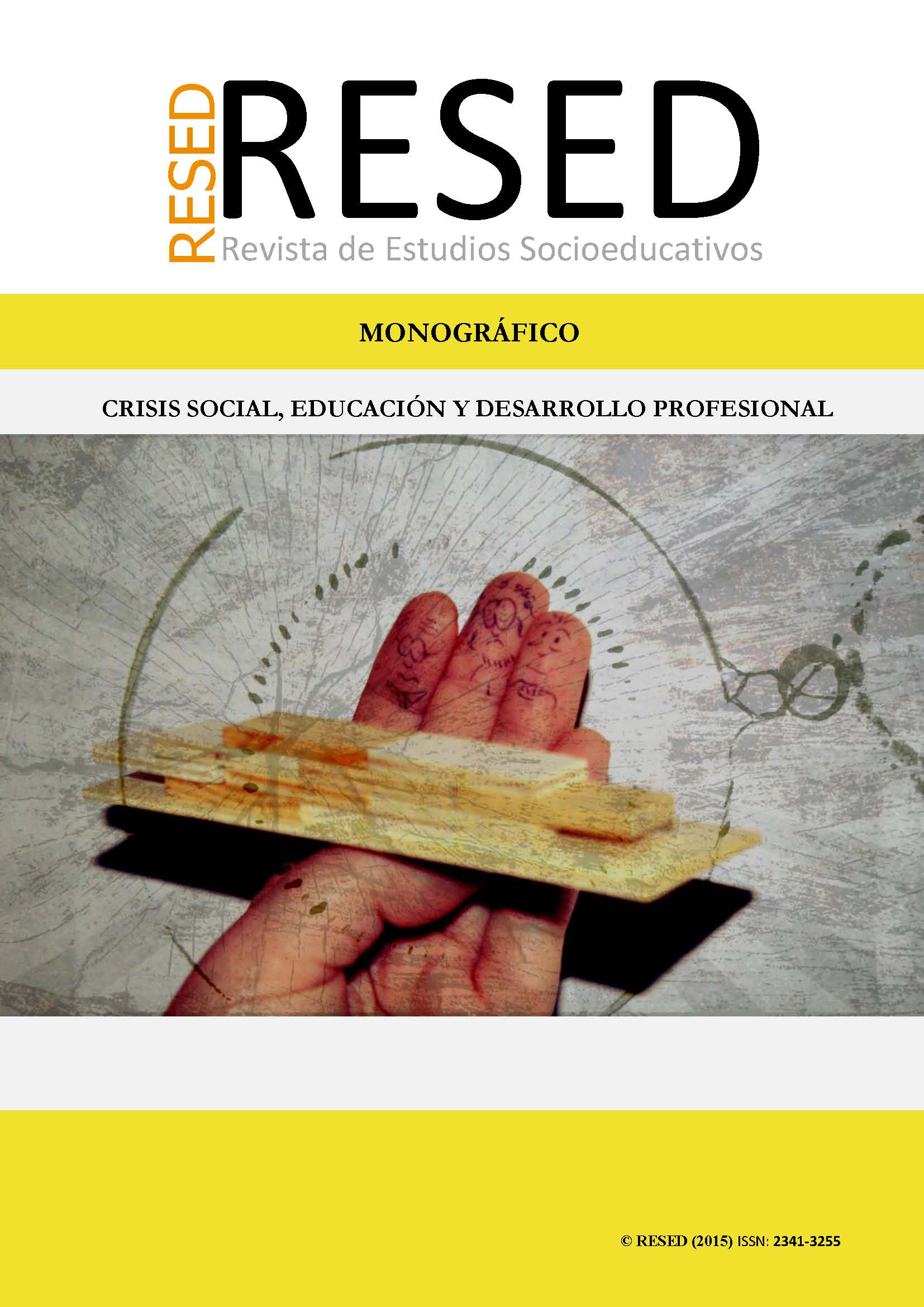Personal relations in virtual social networks society

Info
Abstract
Virtual social networks have become in recent years the technological-human phenomenon that has marked a before and after in society. Commercial and labour relations, the transmission of information, the knowledge acquisition, but also the group and personal interactions have experienced a regeneration which raises the question whether the old paradigms can still be useful in understanding social rules.
In this article we will discuss the rise of virtual social networks, how they differ from traditional or classical networks and which aspects in this new model of interaction can improve our relationships with others and our own satisfaction.
Keywords
Downloads
How to Cite
License

This work is licensed under a Creative Commons Attribution-NonCommercial 4.0 International License.
References
Barnes, J.A. (1954). Class and Committees in a Norwegian Island Parish. Human Relations, 7, 39-58.
Boneva, B. y Kraut, R. (2002). Email, gender and personal relationships. En B. Wellman y C. Haythornthwaite, The internet in Everyday Life (pp. 372-403). Oxford: Wiley-Blackwell.
Bueno Abad, J.R. (2009). La enfermedad como exclusión social. En S. Yubero, E. Larrañaga y J.F. Morales, Exclusión: nuevas formas y nuevos contextos (pp. 63 -86). Cuenca: Publicaciones de la Universidad de Castilla-La Mancha.
Campos Freire, Francisco (2008). Las redes sociales trastocan los modelos de los medios de comunicación tradicionales. Revista Latina de Comunicación Social, 63, 287- 293. La Laguna (Tenerife): Univ. De La Laguna. Recuperado en:
http://www.ull.es/publicaciones/latina/_2008/23_34_Santiago/Francisco_Campos.html
Castells, M. (1997). La era de la información. Economía, sociedad y cultura, Vol. I: La sociedad red. Madrid: Alianza Editorial.
Castro, R., Campero, L., Hernández, B. (1997). La investigación sobre apoyo social en salud: situación actual y nuevos desafíos. Revista de Salud Pública. 31 (4); 425-435.
Cole, J. (2000). Surveying the Digital Future. Los Angeles: UCLA Center for Communication Policy. Recuperado en: http://cort.as/aBJ_ (19-10-2015)
Dean, A. (1986). Social support, epidemiological perspective. En N. Lin (Ed,), Social support, life Events and Depression. Nueva York: Academic Press.
Ellison, N.B. (2007). Social network sites: Definition, history, and scholarship. Journal of Computer-Mediated Communication, 13 (1), 210-230.
España. Ministerio de Industria, Energia y Turismo. Observatorio Nacional de las Telecomunicaciones y de la Sociedad de la Información. (2014). Perfil sociodemográfico de los internautas. Análisis de datos INE 2013. Recuperado en: http://cort.as/aBHd (19-10-2015)
España. Ministerio de Industria, Energía y Turismo.Secretaría General Técnica. Subdirección General del Desarrollo Normativo. Observatorio Nacional de las Telecomunicaciones y de la Sociedad de la Información (2014). Informe anual: La Sociedad en red 2013.Recuperado en: http://cort.as/aBHu (19-10-2015)
Fernández Peña, R. (2005). Redes sociales, apoyo social y salud. Revista de recerca i formació en antropologia, 3. Recuperado en: (http://cort.as/YN6b) (19-10-2015)
Gottlieb, B. H. (1981). Social networks and social support in community mental health. En B.H. Gottlieb (Ed.) Social networks and social support Londres: Sage; 11-42.
Hampton, K.N. y Wellman, B. (2000). Examining community in the digital neighborhood: early results from Canada’s wired suburb. In Digital cities Berlin: Springer; 194-208.
Hampton, K., Goulet, L.S., Rainie, L. y Purcell, K. (2011). Social networking sites and our lives: How People’s Trust, Personal Relationships, and Civic and Political Involvement are Connected to Their Use of Social Networking Sites and Other Technologies. En Pew Research Internet Project. Recuperado en: http://cort.as/aBIr (19-10-2015)
Kennedy, T. (2007). Working @ home: negotiation space and place. En Washida Y., Information Communication Technologies and Emerging Bussiness PracticesHersey, PA: Idea Group Publising; 257-259.
Kraut, R., Kiesler, S., Boneva, B., Cummings, J., Helgeson, V. y Crawford, A. (2002). Internet paradox revisited. Journal of social issues, 58 (1); 49-74.
Kraut, R., Patterson, M., Lundmark, V., Kiesler, S., Mukophadhyay, T. y Scherlis, W. (1998). Internet paradox: A social technology that reduces social involvement and psychological well-being? American Psychologist, 53 (9); 1017-1031.
Llantá Ramos, G., Meneses Gómez, L.B. y Llanes Grande, S. (2013) Apuntes sobre el papel de la comunicación en el desarrollo de la social. Razón y palabra, 83. Recuperado en: http://cort.as/aBI5 (19-10-2015)
Miyata, K. (2002). Social supports for Japanese mothers online and offline. En B. Wellman & C. Haythornthwaite, (Eds.). The Internet in Everyday Life Oxford: Wiley-Blackwell; 520-548.
Robinson, J. P. y Kestnbaum, M. (1999). The personal computer, culture, and other uses of free time. Social Science Computer Review, 17 (2); 209-216.
Shade, L. (2004). Bending gender into the net. En P.N. Howard y S. Jones (Eds.), Society Online Thousand Oaks, CA: Sage Publications; 57-83.
Small, G. y Vorgan, G. (2008). El cerebro digital. Cómo las nuevas tecnologías están cambiando nuestra mente. Barcelona: Ediciones Urano.
Uslaner, E.M. (2001). Volunteering and Social Capital: How Trust and Religion Shape Civic Participation in the United States. En P.Dekker y E.M. Uslaner (Eds.). Social Capital and Participation in Everyday Life. London: Routledge; 104-117.
Weinberg, N., Schmale, J., Uken, J. y Wessel, K. (1996). Online help: cancer patients participate in a computer-mediated support group. Health & Social Work, 21 (1); 24-29.
Wellman, B. (1979). The community question: The intimate networks of East Yorkers. American journal of Sociology, 84 (5), 1201-1231.


